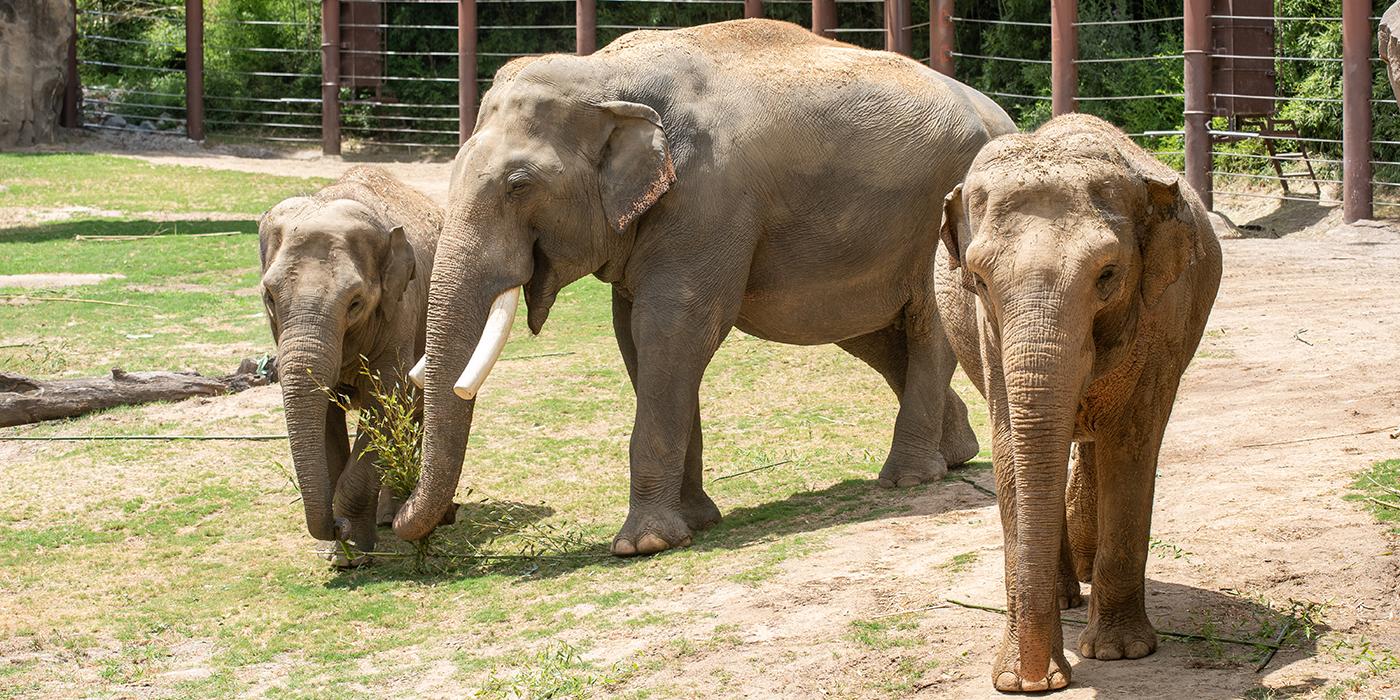Asian Elephant Bozie Arrives At The Smithsonian's National Zoo
Animal care staff at the National Zoo welcomed a new resident to Elephant Trails May 22—Bozie, a 37-year-old female Asian elephant. She arrived safely and is now in quarantine for approximately 30 days. Elephant Manager Marie Galloway, Zoo Veterinarian Nancy Boedeker, and a keeper from the Baton Rouge Zoo accompanied Bozie as she traveled via truck more than 1,100 miles to her new home in Washington, D.C.
When Bozie's only companion died in March, the Baton Rouge Zoo worked diligently to find a home for its single elephant. At the Zoo's Elephant Trails complex, Bozie will have three companions: females Ambika (65) and Shanthi (38), and Shanthi's 11-year-old male offspring, Kandula.Records show that Bozie and Shanthi lived in Sri Lanka together briefly as young calves at the Elephant Orphanage Department of Wildlife Conservation before being transported to North America.
"Social interaction is key to an elephant's mental and physical well-being," said Don Moore, associate director of Animal Care Sciences. "We do everything we can to encourage these natural social bonds. I'm so jazzed for our herd and elephant team!"
Two months ago, the Elephant Community Center opened and marked the completion of Elephant Trails, the Zoo's seven-year, $56 million project. This state-of-the-art exhibit was designed in keeping with the best practices for Asian elephant management. It includes space for socializing, training and playing while providing the elephant staff safe access to the animals. Altogether, the facility can house eight to ten adult elephants and their young.
Bozie is off-exhibit in the Elephant Barn and will be cared for by keepers, nutritionists and veterinarians per standard quarantine procedure. To keep Bozie mentally and physically stimulated, keepers will provide her with a variety of enrichment, including bamboo, boomer balls and puzzle feeders.
Once Bozie clears quarantine, keepers will begin the introduction process. Initially, the elephants will have only visual access to one another. As they become familiar with one another's smell, looks and temperament, keepers will begin the next phase of visual and tactile access through a barrier. Eventually, they will spend time together in the same enclosure.
"Elephants are equally curious and cautious in meeting a new member of the herd," said Galloway. "By watching their behavioral cues, we'll be able to determine their comfort level and can move as quickly or slowly as they see fit. Our goal is for Bozie, Shanthi, and Ambika to bond and live together as a herd."
Zoo visitors can see Ambika, Shanthi and Kandula on exhibit at Elephant Trails.

Related Species:



